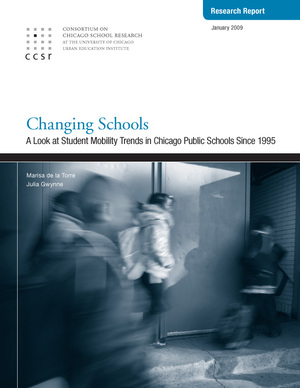Student mobility has been a long-standing concern to educators and researchers because of the negative impact that changing schools can have on students, teachers, and schools. High levels of student mobility can create a sense of upheaval and constant change at the school level, and schools typically have few established practices in place to assist mobile students in the transition into their new school.
Yet despite the potentially negative impact of changing schools, there is growing recognition that it may be beneficial to provide opportunities for students to leave schools with which they and their families are dissatisfied for ones that are better fits.
This study builds on other research by looking at trends in student mobility in Chicago Public Schools (CPS) between 1995 and 2007. We also explore factors that contribute to student mobility. Our analysis focuses on two indicators of mobility—the stability rate and the in-mobility rate—and we examine trends for these indicators separately for the school year and the summer.
Key findings include:
- Student mobility in CPS has decreased since 1995. Student mobility is largely caused by transfers within-district, and the decrease in mobility is due to fewer students making these within-district moves.
- Black students are the most mobile group of CPS students, and the gap between them and other students has grown wider since 2000–01.
- Residential mobility is an important factor influencing the decisions of elementary students to change schools. Other factors, such as a desire to improve the quality of educational opportunities, also influence decisions to change schools, particularly during the summer.
- School district, city, and federal policy changes have had only a small effect on student mobility at the system level. However, some schools and their students experienced a much greater impact as a result of these policies.


